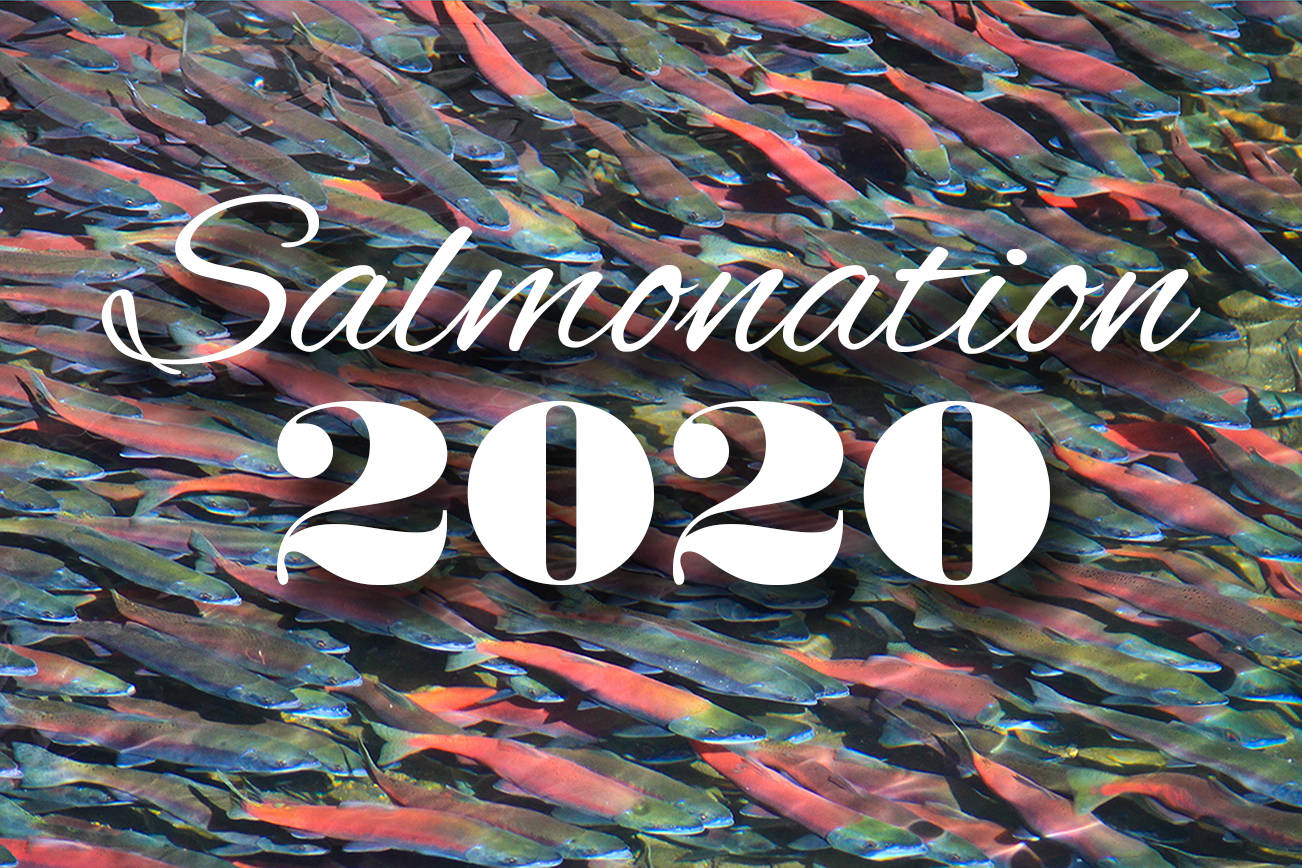Submitted by Kwiaht.
A salmon barbecue, Holly B’s pastries, Lopez Island Vineyard wines and music by Stanley and Kip Greenthal await you at the 11th annual SalmonAtion celebration of Lopez community marine research for salmon conservation, together with a slideshow report on results of last summer’s sampling of salmon, sand lance, herring, and plankton at Watmough Bay. It’s all happening free of charge from 5:30-7:30 p.m., Jan. 25 at Lopez Center. The focus of this year’s SalmonAtion is the changing Salish Sea food web.
“Warmer seas are changing the marine ecosystem from the bottom up,” SalmonAtion host Russel Barsh — whose current research includes the diets of sand lance, herring and Chinook salmon — said. “Plankton biomass is increasing but not necessarily in ways that benefit fish, at least in the near term.”
As director of the Lopez based conservation laboratory Kwiaht, Barsh has studied annual variation in the diet and health of juvenile Chinook migrating through the San Juan Islands since 2008, assisted by local volunteers. Juvenile salmon and forage fish are sampled every two weeks from May to September with a 120-foot seine set by powerboat. Kwiaht recruits recreational anglers to obtain samples of resident Blackmouth Chinook taken in the winter sport fishery. The organization also collaborates with Julie Keister, a biological oceanographer and zooplankton ecologist at the University of Washington, to collect and identify the seasonally changing swarms of zooplankton that forage fish eat.
The keystone prey species in the Chinook food web, Barsh said, are tiny crustaceans called calanoid copepods that range in size from a fraction of a millimeter to about five millimeters (or about a quarter of an inch). Fast-growing herbivores that graze on algae and bacteria, calanoid copepods are about 45 percent protein and are rich in sweet orange-colored oil, like the oil that gives shrimp and crabs their appealing flavor. Sand lance and herring appear to compete for the larger calanoid species, which are associated with cooler seas. Sand lance appears to be more dependent on copepods, however, and their abundance in the islands declined sharply in the wake of “the Blob” of warm water in the northeast Pacific Ocean five years ago. Herring seems more likely to switch to krill, which tends to be too large for the sand lance to eat.
There are winners and losers of a changing ecosystem, Barsh said. While Chinook salmon are struggling to survive, increasingly supported by hatcheries, Chum and Pink salmon appear to be thriving. They eat further down the food web, Barsh explained, competing directly with forage fish for small crustaceans in the plankton. Similarly, warmer seas are facilitating colonization of the Salish Sea by northern anchovy and other new forage fish that could help feed salmon and small cetaceans. The big unknown, Barsh explained, is whether or not salmon will recognize these newcomers as potential prey. Kwiaht was recently awarded a National Fish and Wildlife Foundation research grant to investigate this question, as well as explore the potential competition between new forage fish, herring and sand lance.



